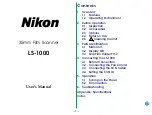
Temperature Gradients in Detection of Shock
Temperature monitoring of the gradient between forehead and sole tem-
peratures has been demonstrated to provide early detection of masked
symptoms during and after surgery. The effect of treatment and the
prognosis for the patient are predictable according to the trends of the
two temperatures as divergent or convergent. The dissociation when
the two temperature are more than 7°C apart from each other suggests
that the hemodynamical condition is worse than in the convergence
when they remain within 2°C.
1
The blood flow in finger skin is known to be very susceptible to sympa-
thetic nervous activity. Palm tissue temperature varies more with the
emotional stress than does sole tissue temperature. Assuming fore-
head and abdominal readings correspond to core temperature,
2
and
sole and palm readings to shell temperature, the hemodynamical con-
dition in convergence is usually better than in dissociation. If dissocia-
tion is observed in a post-op patient, the hemodynamical parameters
have to be checked. When the arterial systolic pressure is less than 90
mmHg and the urine output less than 1ml/min/mg, a state of shock can
be diagnosed based on the dissociation (difference >7°C).
A chilling sensation or shivering is common in dissociation, however,
the symptoms can be overlooked in the patient just after surgery be-
cause an intubated patient cannot complain of a chilling sensation, and
shivering does not occur in patients whose muscles are flaccid owing
to residual pharmacological effects of anesthesia. Monitoring of the
patient’s body surface temperature allows for early detection of shock
in postoperative patients with minimum discomfort and maximum safety
to the patient.
Raynaud’s Syndrome
Temperature monitoring of patients
with Raynaud’s Syndrome provides
a useful, non-invasive method of
quantifying temperature and heat
patterns in determining the underly-
ing pathogenesis of Raynaud’s at-
tacks, and in the evaluation of any
subsequent therapy. Temperature
monitoring may also be useful diag-
nostic tool in differentiating primary
from secondary Raynaud’s. Preliminary research data suggest
Raynaud’s may be a common denominator in certain sleep disorders.
Many patients with connective tissue diseases present with Raynaud’s
27
Evidence of Raynaud’s Syndrome





































